I can’t determine if folding phones are cool or ridiculous, and it’s causing havoc in my brain. On the one hand, the Samsung Galaxy Z Flip 5 is a work of art. It folds down from the size of a standard smartphone to a smaller, pocketable square form. It’s entertaining. It is available in mint green.
However, its outside screen, while bigger than earlier generations, acknowledges the tradeoff of a folding flip phone. It is intended to be folded shut at times. If you require a screen, simply open it! Do not force me to use applications on a small outside screen!
I also found the battery life to be simply OK, and the cameras on this $1,000/£1,000+ phone to be inadequate – these aspects have not improved since 2022’s Z Flip 4.
None of this affects the fact that the Z Flip 5 is still the greatest foldable you can purchase in a variety of ways. This is mostly due to Samsung’s five years of software support and superior worldwide after-sales assistance when compared to Motorola’s flip phone competition. It’s also less expensive than Samsung’s own Galaxy Z Fold 5.
However, after using the Flip for more than a week, I can’t help but conclude that there are numerous phones with superior cameras, battery life, and displays that cost less. I don’t think you should buy this phone only because it folds in half, but it is still the most compelling argument to do so.
Design & build
- Folds flat when closed
- Compact when closed
- Glossy and slippery
The Galaxy Z Flip 5 folds close like vintage flip phones from the early 2000s, making it easier to handle or stow in a pocket or purse. It’s the polar opposite of the Galaxy Z Fold 5, which has the size of a regular phone but unfolds to reveal a bigger tablet-sized screen.

This ability to close flat without the little gap seen on earlier Flips is due to a modest modification in the phone’s hinge, which allows the screen to billow more at the crease in a waterdrop shape and close flat – potentially putting less strain on the folding display over time.
Samsung claims that the hinge and screen can withstand 200,000 motions without breaking – that’s more than five years if you open and reopen it 100 times every day.
I don’t think you should buy this phone just because it folds in half, yet that remains the main reason to buy one
The phone’s exterior is mostly constructed of glass and aluminum, which gives it a slick touch. Very slick indeed. The phone slipped off my level desktop and refuses to remain still on most surfaces. You’ll need a case, even if the Flip is IPX8 water resistant – no dustproof rating here.
Despite lacking the matt glass surface of the Z Flip 4, my mint green review sample did a good job of concealing fingerprints. That may not be the case for different color combinations.
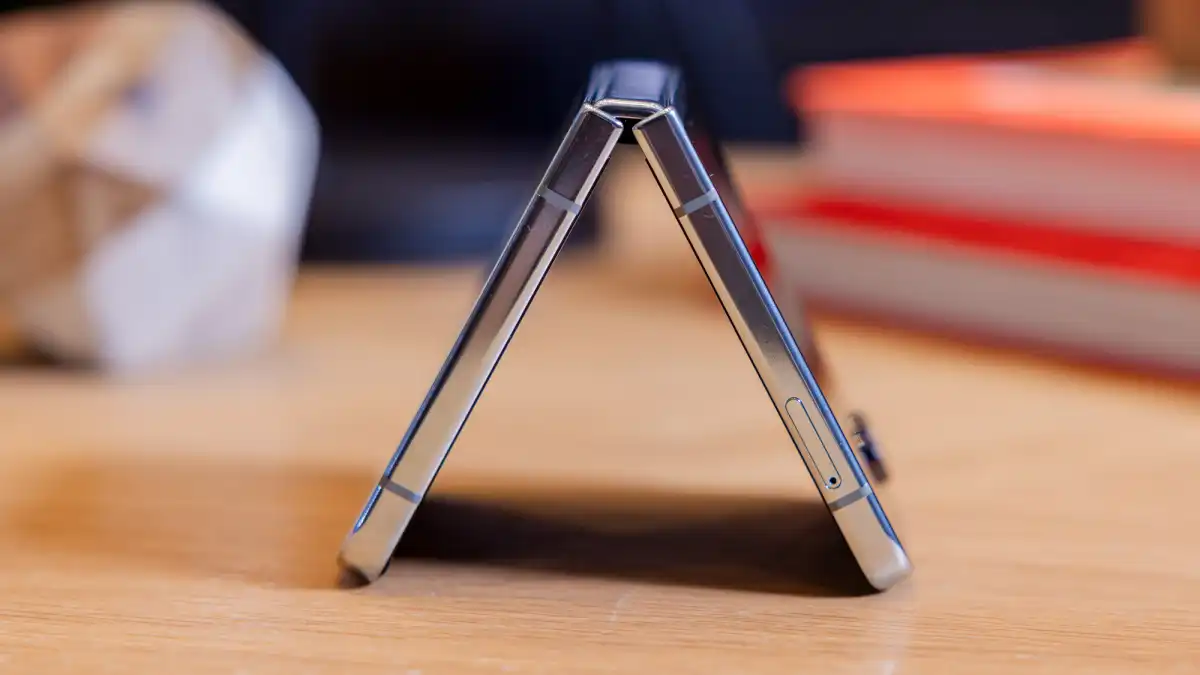
The top half of the phone’s back is covered by an outside display, while the remainder is adorned with twin primary cameras, a USB-C connector, a volume button, and a side-mounted fingerprint sensor. The latter is useful for app authentication and unlocking the phone while it is open or closed.
The Z Flip 5’s haptics are likewise excellent, with crisp, clipped buzzes for the keyboard and excellent usage of diverse vibration patterns across the user interface (UI).
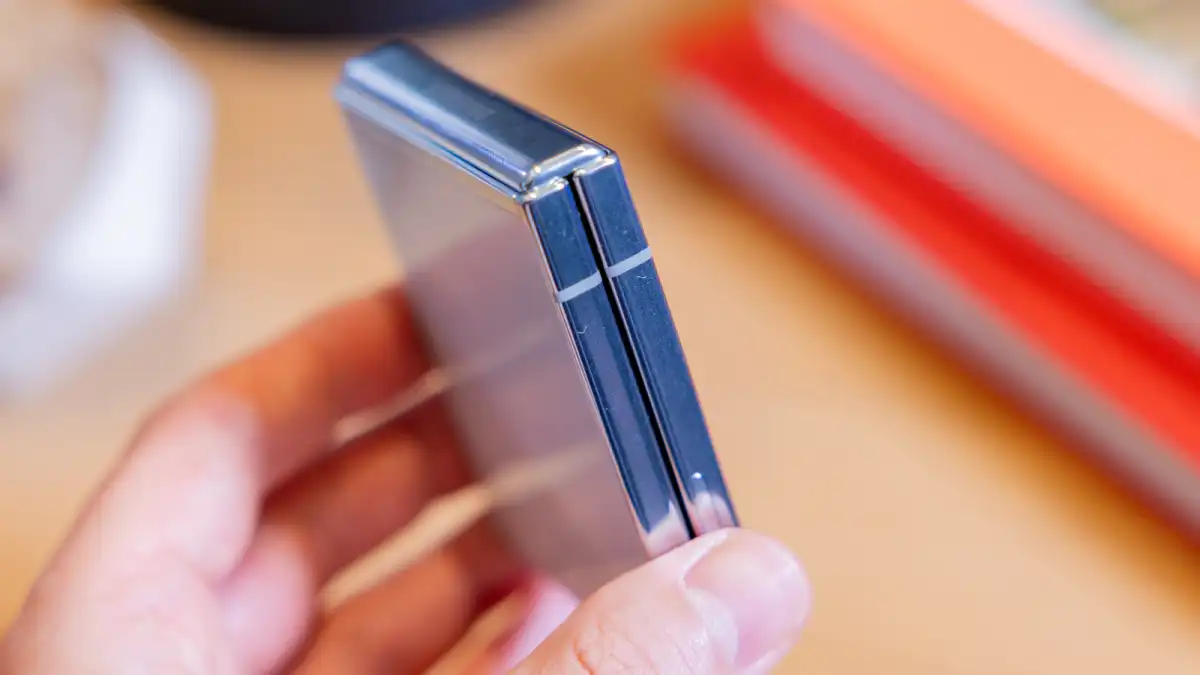
Screens & speakers
- 6.7in 120Hz AMOLED main screen
- 3.4in 60Hz AMOLED outer screen
- Dual stereo speakers
The Z Flip 5 sports a 6.7in OLED 120Hz folding screen with a lofty 22:9 aspect ratio and a huge crease straight across the centre horizontally when unfolded. Samsung employs a plastic and glass mix to fold, but in practice it feels like tapping and swiping directly on plastic.
It’s a miracle that it works, but it’s a less premium experience than engaging directly with the glass of a standard smartphone. The outer layer quickly becomes soiled with fingerprints and hand grease.
The main upgrade for the Z Flip 5 over previous models is the outer screen
The primary difference between the Z Flip 5 and prior versions is the larger outer screen, which is now a 3.4in 60Hz display that can show significantly more information than the previous dinky ones. To avoid the cameras, it dips down at the bottom left edge.
The concept is that you may run huge widgets for applications like calendar, weather, and alarms without unlocking the phone, as well as view and interact with notifications.

Like its main competition, the Motorola Razr 40 Ultra (Razr+ in the US), it can run full programs like Google Maps, YouTube, and WhatsApp, the latter replete with a small keyboard for typing messages.
It’s amazing and stylish, but it feels like a workaround for a problem Samsung created. The entire purpose of a flip phone, both today and 20 years ago, is that it is a tiny design that you close and store. You are free to discontinue use and are urged to do so. If necessary, you can use the entire inner screen.
Using the exterior display is always a bad idea. One interesting feature is that it may be used as a viewfinder to take a selfie or group shot with the primary camera. Otherwise, everything it can do is more bothersome and unpleasant than simply unlocking the phone.
I like the earlier Z Flip 4 or Motorola Razr 40‘s tiny displays, which don’t distract you while still displaying important information.
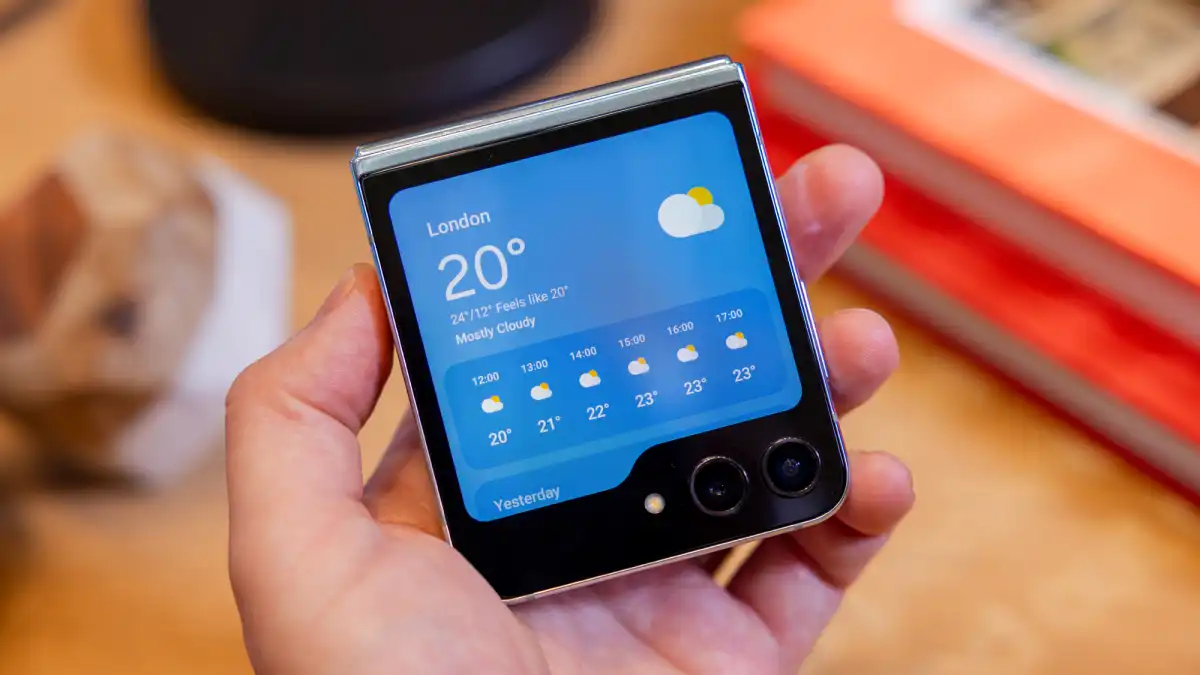
When the phone is closed and the always-on screen is turned on, it’s handy to see the time, date, notifications, or battery %. This is helpful information, and it allows me to keep my phone closed. I’m not interested in watching Netflix videos on it. That’s ridiculous.
In a pinch, I could use Google Maps and hold the phone closed with one hand. But I’ve never held a regular smartphone while using Google Maps and thought it would be great if the screen was considerably smaller and presented far less information.
Here’s how Google Maps on the Z Flip 5 (left) compares to the Motorola Razr 40 Ultra’s outside display:
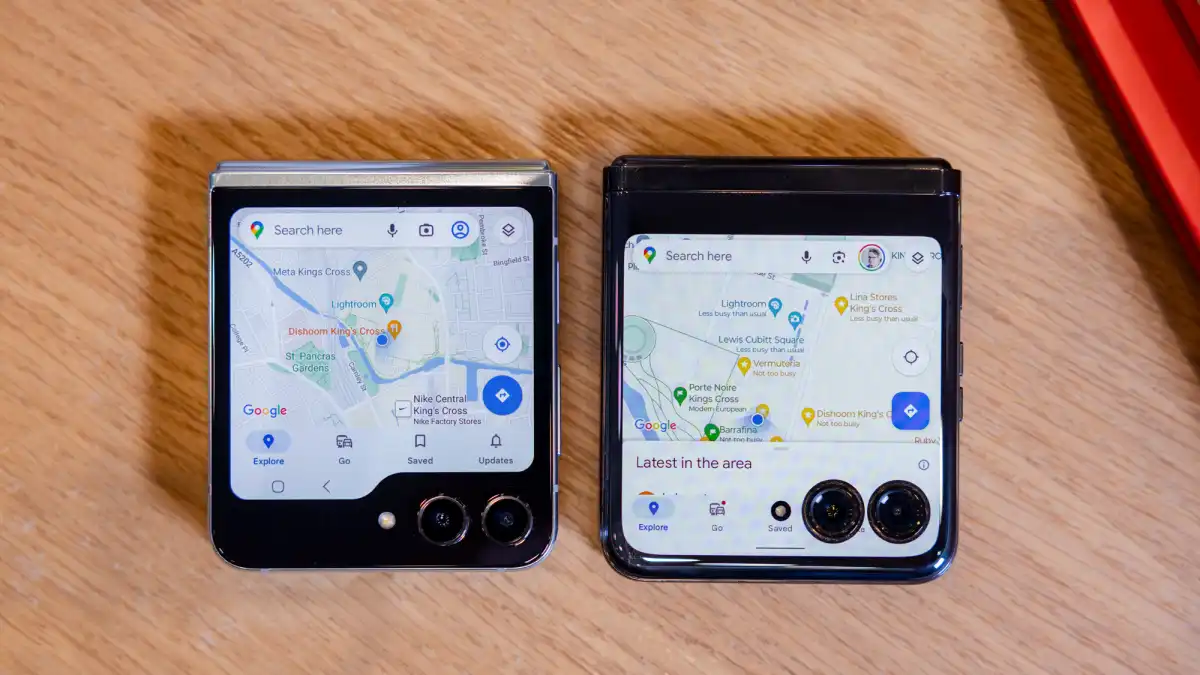
If anything, the cover screen demonstrates that Samsung has to modify something on the Flip once a year to differentiate it from the previous one. That’s the big deal this year. To be fair, you may enjoy it. The Z Fold 5’s outside display makes considerably more sense because it’s a whole phone screen rather than a half-baked widget window, but you might not want a phone so huge and hefty.
The two stereo speakers in the earpiece and the bottom edge produce enough volume and do not distort even at maximum volume, however they do become piercing. Like many phones, it’s wonderful for YouTube and podcasts, but if you want to listen to music, acquire a Bluetooth speaker.
The Z Flip 5’s performance is very good thanks to the special overclocked version of the Qualcomm Snapdragon 8 Gen 2
Specs & performance
- Snapdragon 8 Gen 2 for Galaxy
- 8GB RAM
- Runs very well
The performance of the Z Flip 5 is excellent owing to the unique overclocked version of the Qualcomm Snapdragon 8 Gen 2 found in the Z Fold 5 and Galaxy S23 phones. Because it has 8GB RAM against 12GB in the Fold or Galaxy S23 Ultra, the Flip performs somewhat slower when genuinely pushed with high-end gaming and multitasking.
In benchmark testing, the Flip outperformed last year’s Flip 4 in CPU use, while graphics results were nearly identical:
Every Z Flip 5 model features 8GB of RAM and either 256GB or 512GB of non-expandable storage. It’s encouraging to see Samsung abandoning the 128GB variant in favor of a device with double the storage capacity.
Call of Duty Mobile played flawlessly on my review sample, albeit the wrinkle in the centre of the screen was bothersome.
Wi-Fi 6E, Bluetooth 5.3, NFC, 4G, and 5G connectivity are available.
Camera & video
- Solid 12Mp main sensor
- 12Mp ultra-wide and 10Mp selfie
- Often over-saturated colours
The cameras on the Z Flip 5 are robust and completely enough, although not as outstanding as those on some other phones in this price range.
Having said that, the primary lens has a wonderful dynamic range and is a really fine camera that you’ll be happy to bring around with you for the next few years. I got some pretty good photos out of it, but it’s not the most consistent.
The 12MP primary lens features an aperture of f/1.8, optical image stabilisation (OIS), and shoots crisp, sharp images in daytime. The clarity and degree of detail astonished me, albeit a handful of photos exhibit patches of blur. I also discovered that the colors, notably the blues and greens, are occasionally saturated to within an inch of their dayglo ideal:
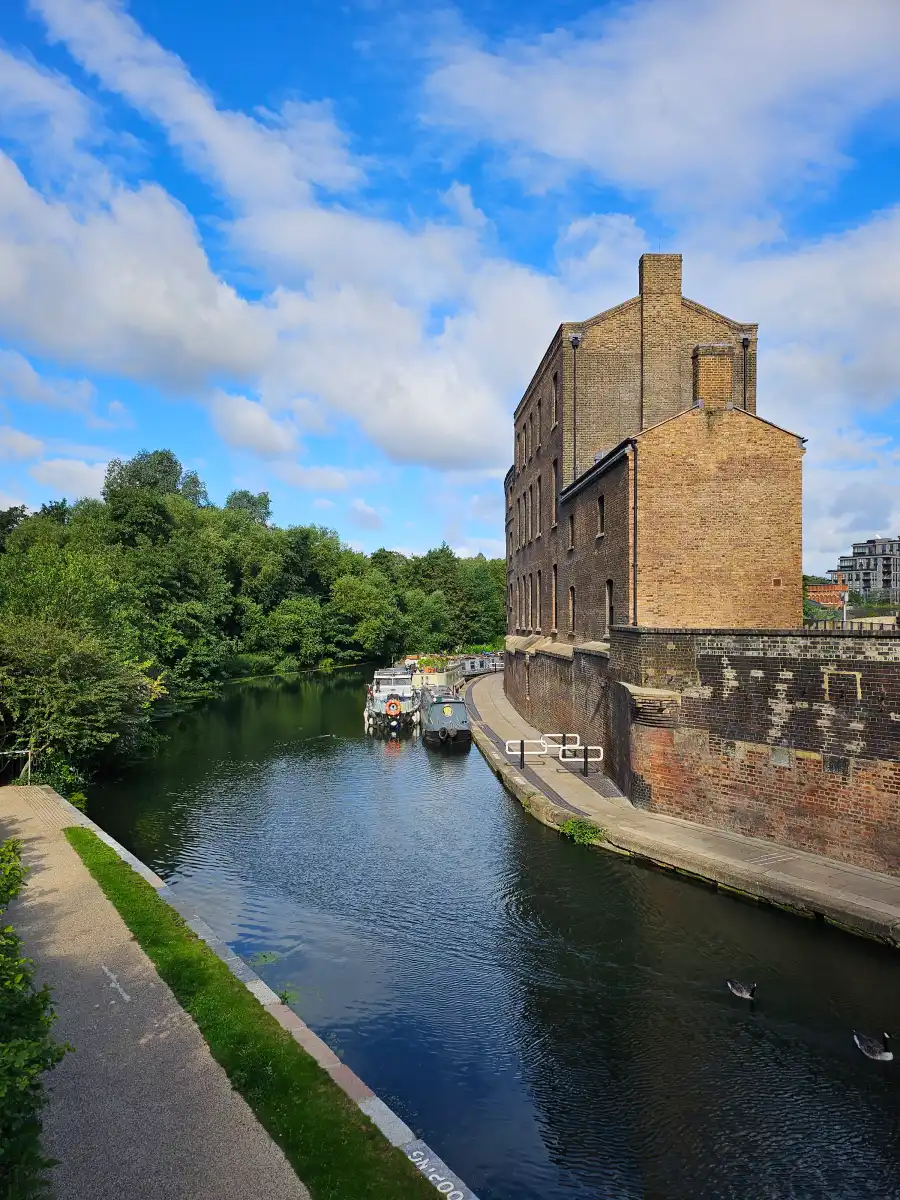
Here’s more of that main lens in action, including using the front screen as a selfie viewfinder, and in low light:
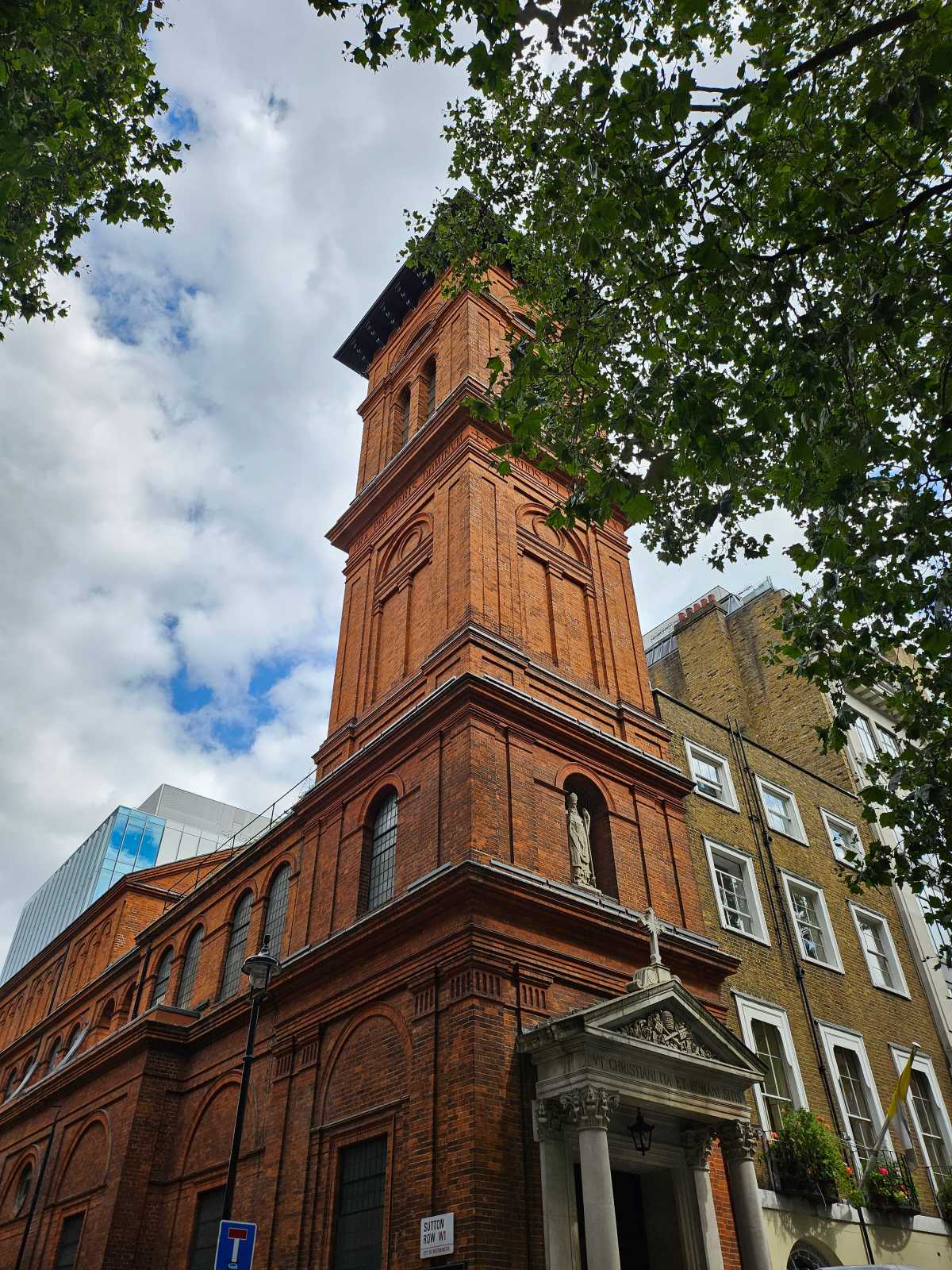
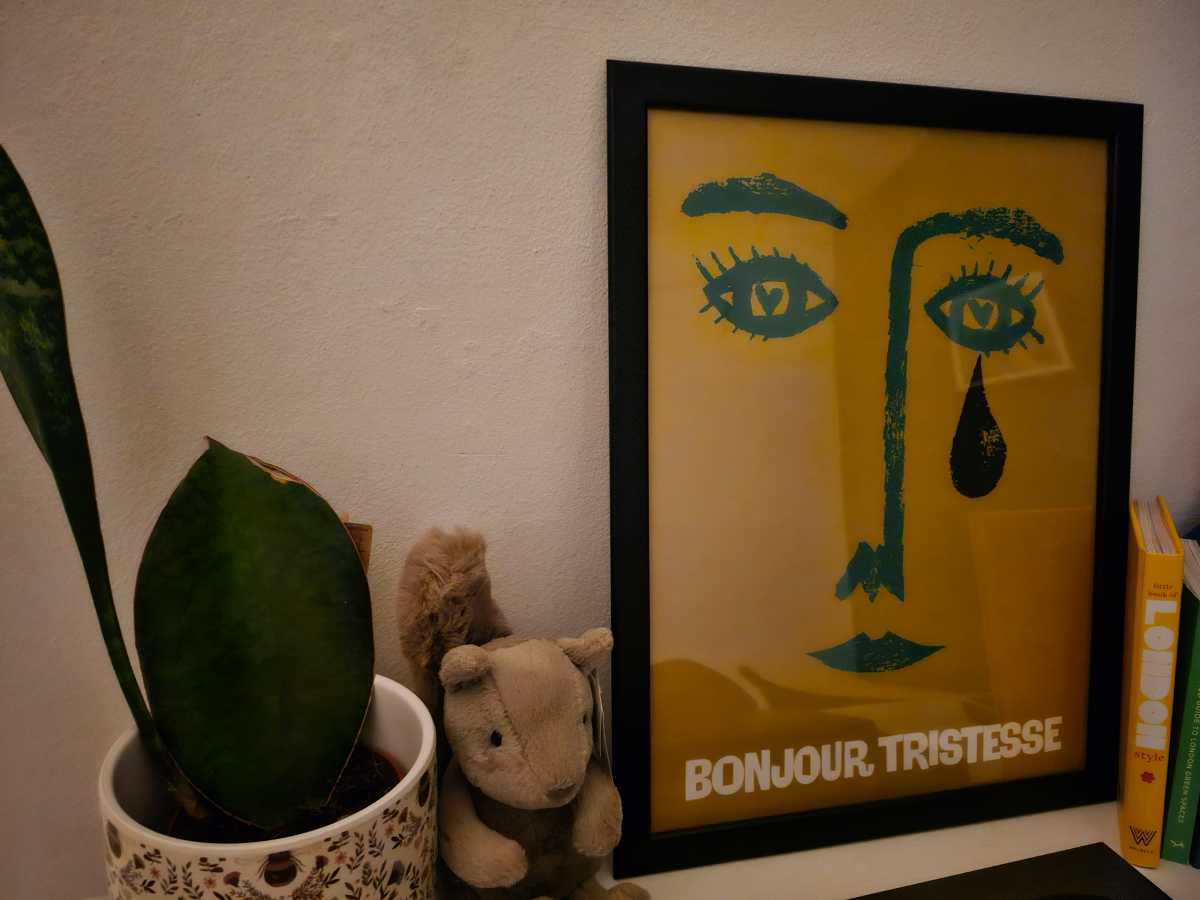

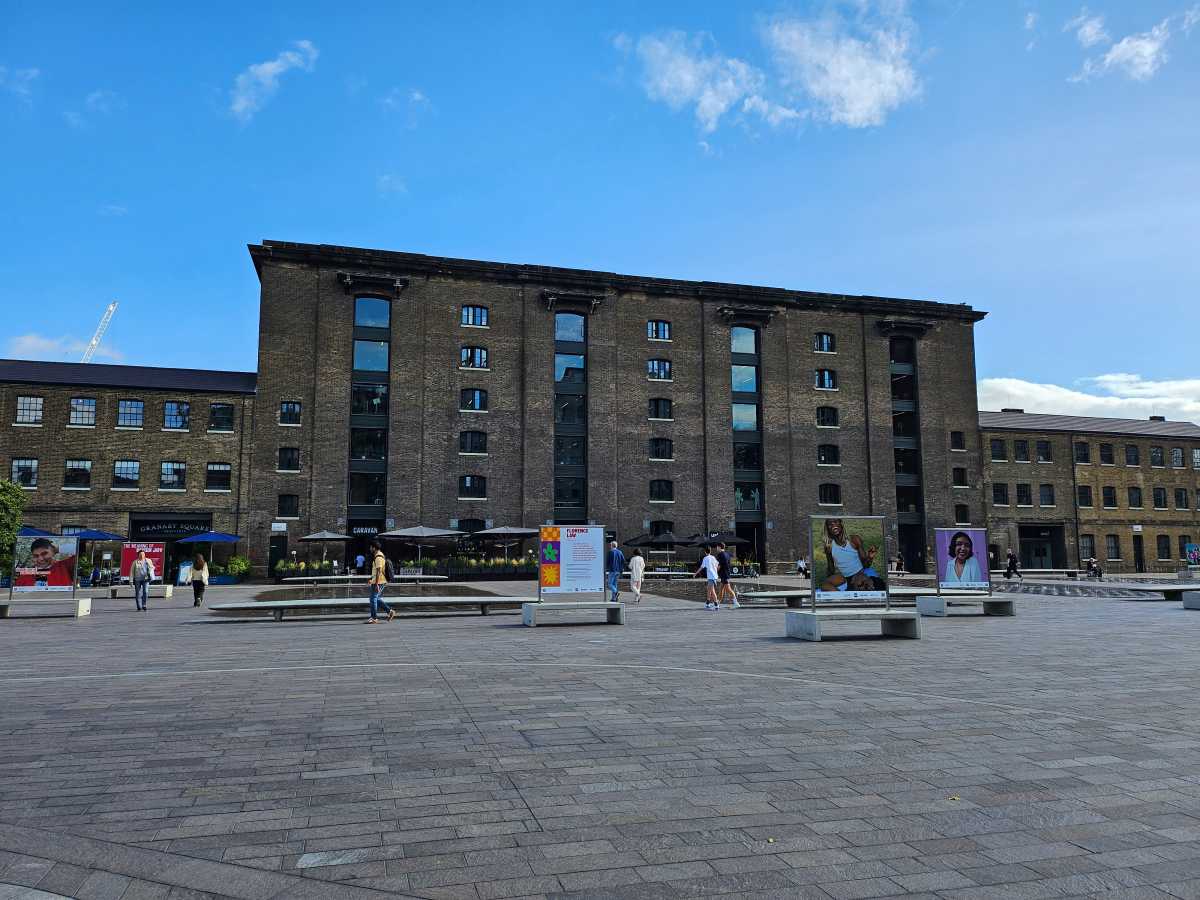
Perhaps I’m being picky, but the color palettes of the iPhone 14 and, in especially, the Google Pixel 7 feel much more natural to my eyes (phones that cost less than the Flip but don’t, you know, flip).
You can shoot in RAW, which is nice, and the video is excellent, with stabilized footage capable of processing at up to Ultra HD (4K) at 60fps.
The ultra-wide camera is likewise 12Mp but has a separate sensor with f/2.2 but no OIS and worse quality. Fine for catching more of a scene, although the color is often overpowering in many situations:
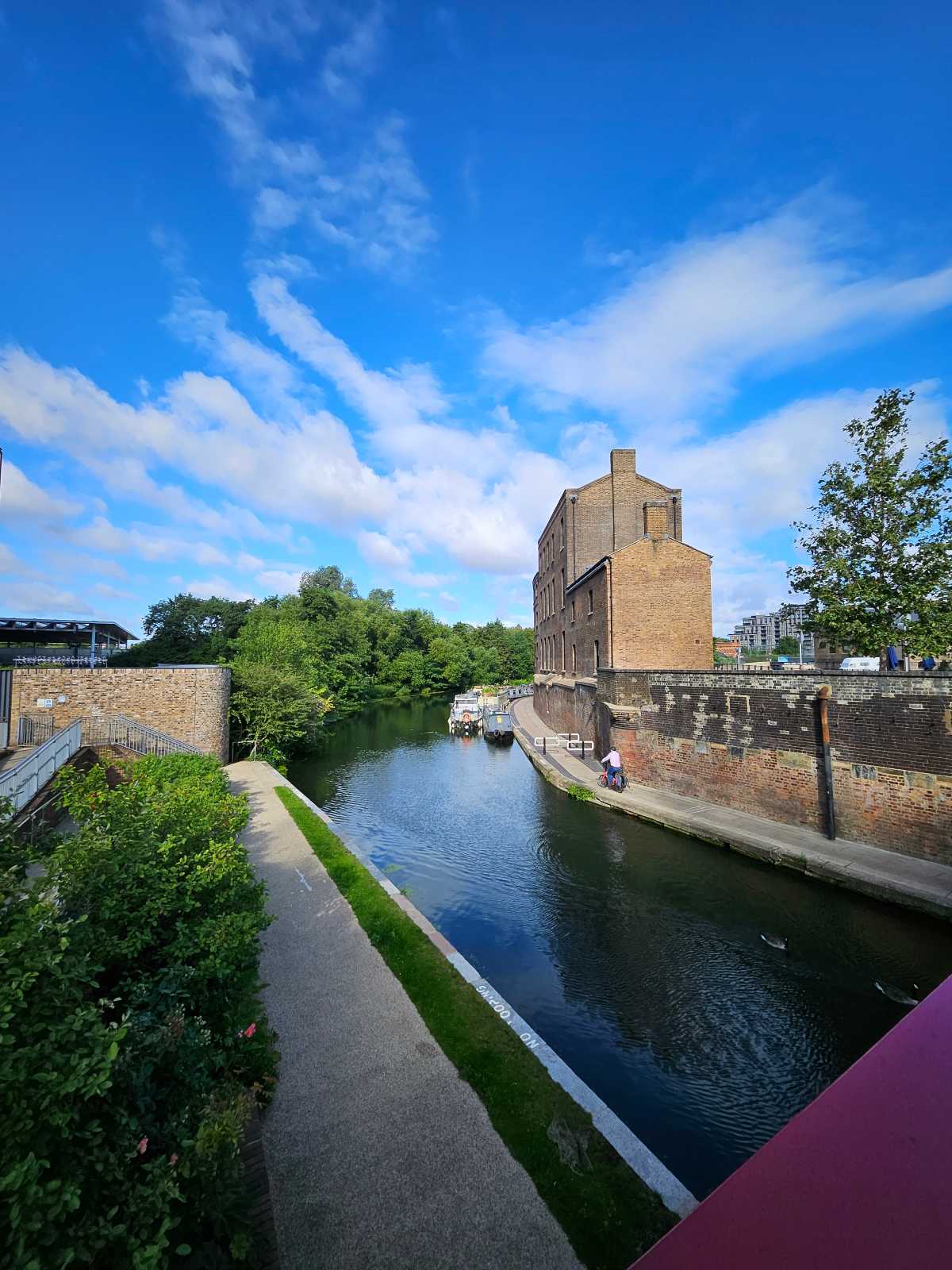

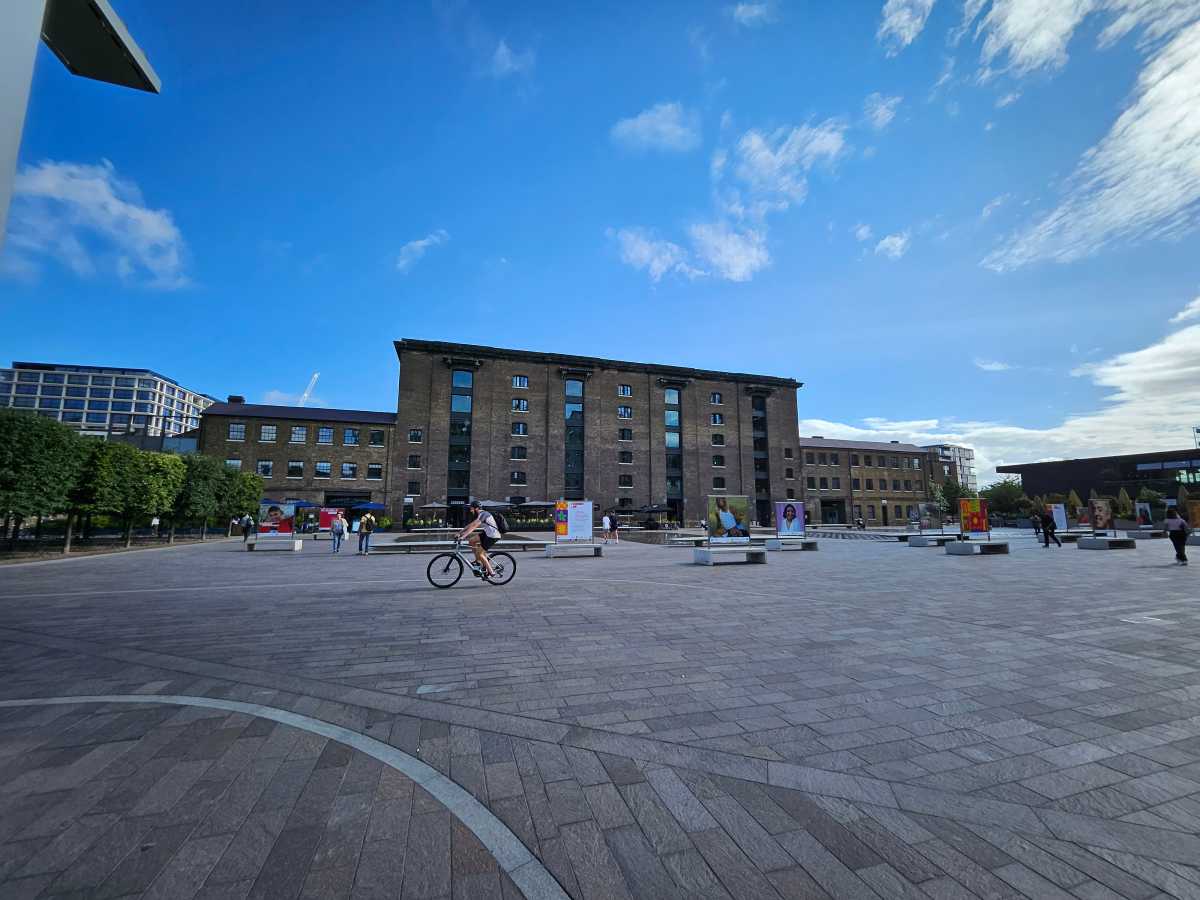
Don’t get me wrong, the cameras here are solid and will be more than enough for casual photographers.
But if you’re looking for the greatest camera phone, this isn’t it, especially if you want an optical telephoto lens, which the Z Flip 4 lacks. Zoom is digitally clipped from the main lens, and you may use the UI to zoom in at 2x, 4x, and 10x. 10x appears awful, but 4x photos are very good:
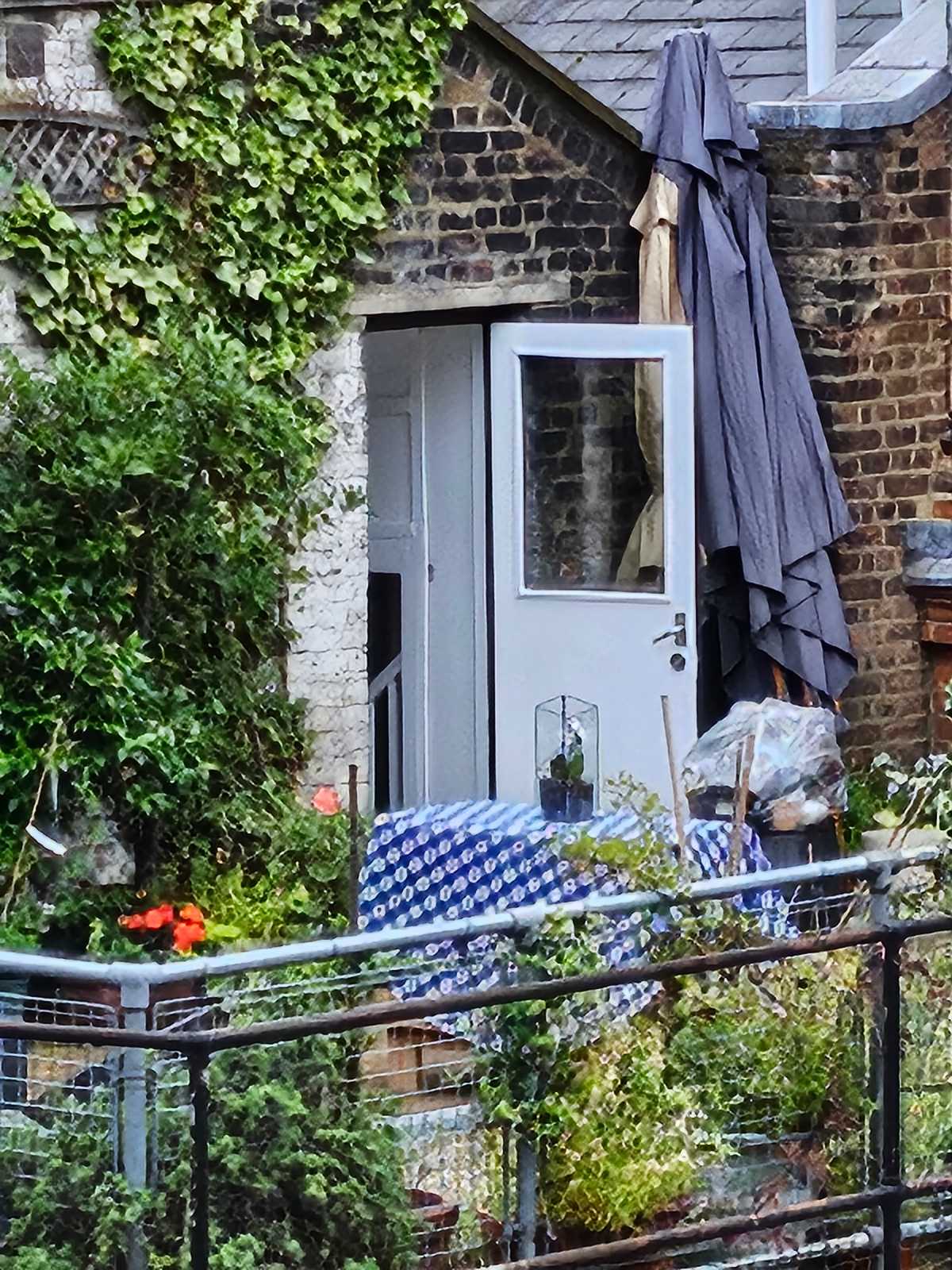




Battery life & charging
- Slow 25W wired charging
- Qi wireless charging
- Reverse wireless charging
The Z Flip 5 comes with simply a USB-C to -C connection and can only charge at a pathetic 25W no matter what charger you use. This falls very short of the OnePlus 11 (100W) and even Samsung’s own 23 Ultra (45W).
Despite the tiny capacity, I charged the phone from dead to 22% in 15 minutes and 40% in 30 minutes. The OnePlus 11 can charge completely in 26 minutes. The Z Flip 5 is not for you if you value rapid charging.
I found the battery life to be adequate, lasting roughly a day when I used the phone often. The phone lasted 11 hours and 5 minutes in PC Mark’s battery test.
The gadget has a 3,700mAh cell due to its tiny size, whereas the Razr 40 (standard model) has a 4,200mAh cell. This is not a two-day phone, and I watched it lose more over 10% overnight when doing nothing. Keeping the always-on function on the outside screen enabled may have contributed to this.
The phone once reached 19% after only two hours and eleven minutes of screen time. That was horrible, but it was typically better. If you use your phone frequently, you may need to charge it before the end of the day.
However, if you have enough battery, you can reverse charge compatible accessories like headphones or charge the phone itself on a Qi charging station.
I found battery life to be fine, just about lasting a day
Software & features
- Android 13
- OneUI 5.1.1
- Five years of support
You can only run a limited amount of complete programs on the outer screen out of the box, but there is a method to run whatever app you want. It’s the most bizarrely concealed software function – Samsung obviously doesn’t want you to enable it because it’s a poor experience, so I’m not sure why you can.
You install the Samsung program Good Lock from the Galaxy Store, then install the MultiStar function (obviously!). Then you hit MultiStar and, believe it or not, ‘I Galaxy Foldable,’ before enabling the Launcher Widget. From there, you can choose whatever applications you want to run on the exterior display. The Good Lock widget must then be added to the outer display.
They function OK, but Samsung is definitely attempting to restrict which apps are used on it by the majority of users. Why not allow all programs to be installed, as on the Motorola Razr 40 Ultra?
Out of the box, you can only run a select number of full apps on the outside screen, but there’s a way to run any you like
On the primary screen, One UI 5.1.1 looks and behaves just as you’d expect from a standard Samsung smartphone. It’s incredibly customizable, and in my experience, it takes a little fiddling to be satisfied with it, but I’m not a One UI hater. I could easily use it every day and prefer it over Xiaomi, Vivo, and OnePlus’ Android skins.
Samsung’s ‘flex mode’ works with a select apps, including the camera and YouTube, and allows you to use the phone hands-free by folding it halfway. It works well for video calls and is compatible with WhatsApp, Facebook Messenger, and Google calling applications.
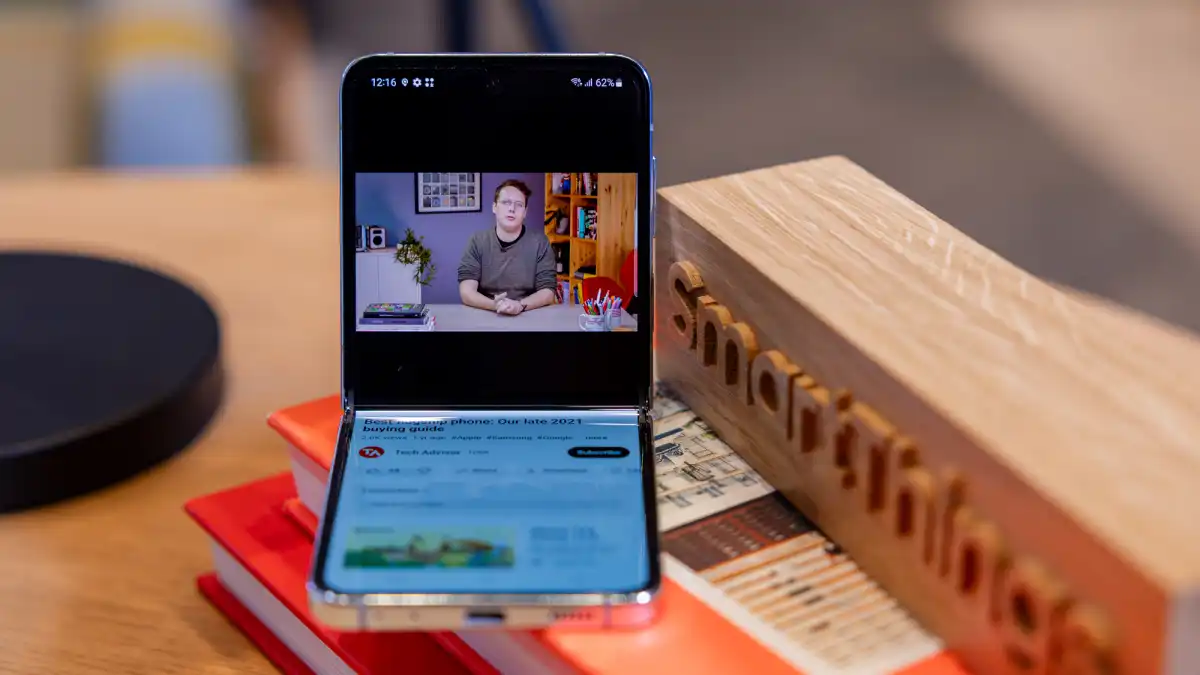
There’s also a function dubbed ‘flex mode panel’ that allows you to keep any app open on the top half of the screen while turning the bottom half into a touchpad, thereby turning the phone into a mini laptop with mouse control. It’s adorable and might serve as an accessibility alternative for some.
Samsung continues to provide the finest software support of any Android manufacturer, with four years of Android updates and five years of security patches for the Z Flip 5, meaning you’re covered until 2027 and 2028, respectively.
Samsung still has the best software support of any Android manufacturer
With all of the phone’s capability, I’m not sure why Samsung doesn’t include its desktop mode DeX with the Z Flip 5. It is supported by the Z Fold 5 and the S23 phones. Connecting the phone to a display to run apps in a Windows-style desktop mode is a highly useful, though niche, feature, and the technology here could surely handle it.
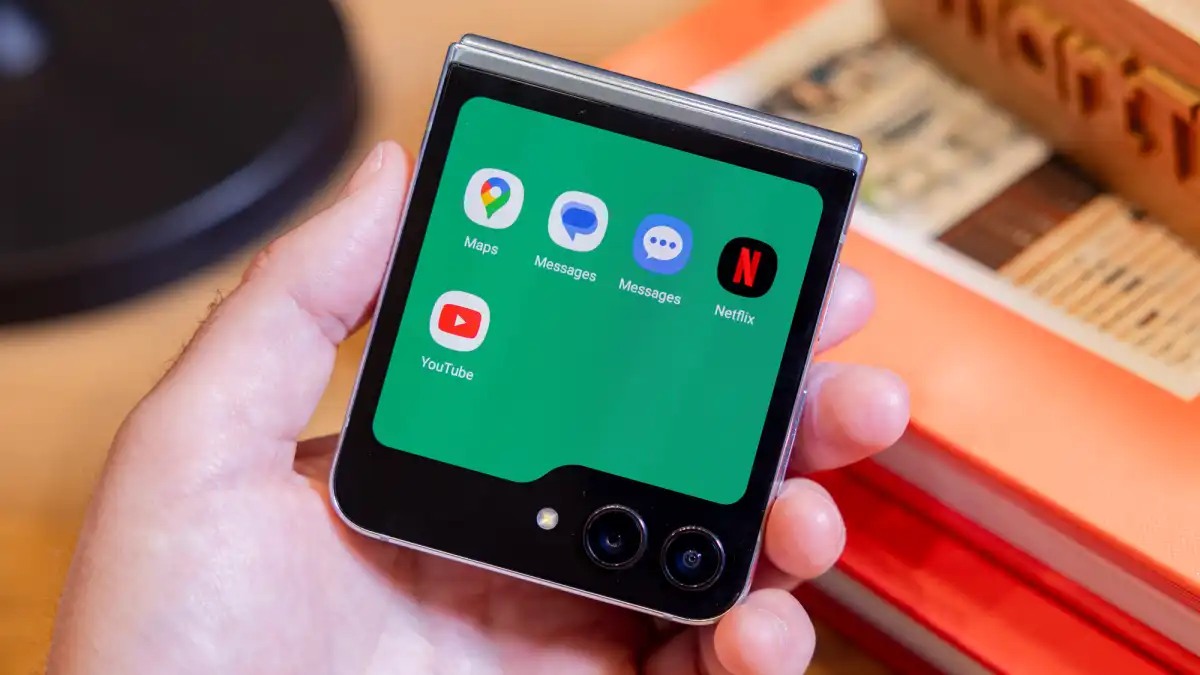
Price & availability
The Samsung Galaxy Z Flip 5 costs from $999.99/£1,049 for a model with 8GB RAM and 256GB storage.
An 8GB/512GB model costs $1,119.99/£1,149.
If you pre-order the phone from Samsung directly, you can get the 512GB version for the price of the 256GB. This offer is on until the official on sale date of 11 August.
Specs
- Android 13 with One UI 5.1.1
- 6.7in Full HD+ 120Hz (2640×1080) foldable 120Hz Dynamic AMOLED 2X with HDR10+ support
- 3.4in Super AMOLED (260×512) 60Hz cover screen
- Qualcomm Snapdragon 8 Gen 2 for Galaxy chipset
- 8GB RAM
- 256/512GB internal storage
- 12Mp, f/1.8, OIS rear camera + 12Mp ultra wide, f/2.2
- 10Mp, f/2.2 front camera
- Side-mounted fingerprint scanner
- 2D face recognition
- Wi-Fi 6E
- Bluetooth 5.3
- GPS
- NFC
- 5G
- 4G LTE
- IPX8
- USB-C
- 3700mAh non-removable battery
- 25W wired charging
- Wireless charging
- Unfolded: 71.9 x 165.1 x 6.9mm
- Folded: 71.9 x 85.1 x 15.1mm
- 187g


